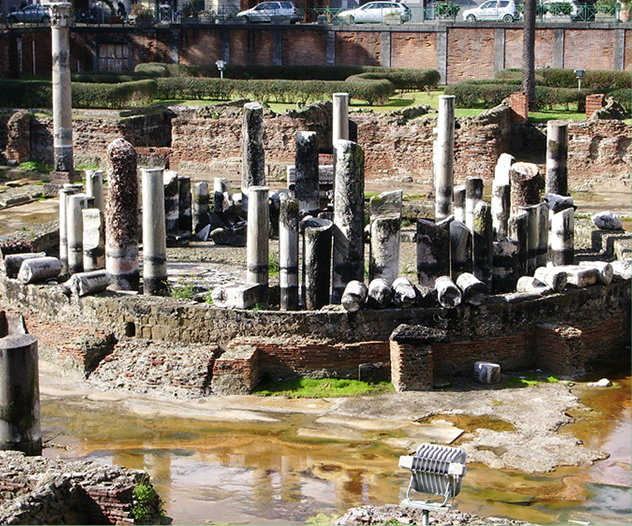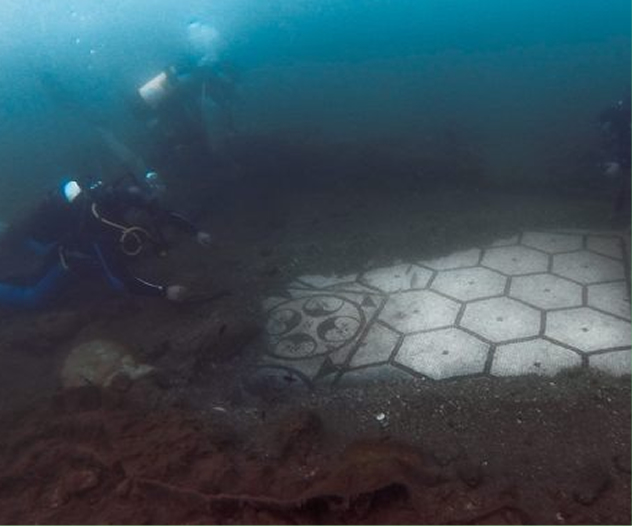Surroundings
Pozzuoli Excursions
TIGEM enforces its guests to learn about historic Pozzuoli, located in the geological Phlegraen Fields.
Macellum, Temple of Serapis and Rione Terra
The macellum, or market complex of the Roman city called Puteoli (Latin for modern- day Pozzuoli), is a central historical site located on the shores of historical Pozzuoli. The site is commonly misidentified as the Temple of Serapis, as a statue of the Greco-Egyptian mythological figure Serapis was found during its excavation in the 18th century.
The macellum was constructed between the first and second century AD in the form of a central courtyard surrounded by two-story structures. The market had areas for cult practices and several niches where statues were placed to protect it.
The site’s structure has led to important geological conclusions. Three of its marble columns, characterized by trace fossils left behind by marine mollusks left along the height of the columns, remained erect throughout sea level fluctuations. The variation in sea level, marked by the fossils, indicated that bradyseism, or lifting and descent of the terrestrial surfaces, occurs in the area – this is typical of a volcanic zone like that which surrounds the macellum.
Nearby is Rione Terra, an ancient section of Pozzuoli inhabited since the second century AC. Located on a small elevated hill by the coast, it was a strategic point to guard Pozzuoli and check boat entrances to kept away enemies from invading. The area features archaeological treasures such as Roman baths and ancient tunnels.
Potential limitations: This is a small, contained area, making it quite navigable and pleasant for most visitors.
Flavian Amphitheater
The Flavian Amphitheater, not to be confused with the Flavian Colosseum of Rome, is the third largest amphitheater in Italy. Constructed under the rule of the emperor Vespasian, the arena has a capacity of 20,000 spectators who gathered to watch gladiator games, races and concerts. Tunnels, columns, and the chains used to raise animal cages to the arena have remained intact. The amphitheatre, like many of structures like it, is characterized by its cavea, or subterranean cells, which were used to store dangerous animals such as lions before combats.
Potential limitations: There may be some stair climbing or uneven surfaces, which may be taken into consideration by those injured or hindered mobility-wise.
Baia and the Submerged City by boat
You could call the underwater city of Baia a mini-Atlantis. An archeological jewel, this city is a protected marine area in the Bay of Naples. This zone, like many others in the Phlegraen Fields, is characterized by bradyseism, the gradual movement of the Earth’s crust caused by movement of underground magma. The remains of the Roman ports of Baia (Latin: Baiae) can be seen here. Archaeological features such as porticos, statues, mosaic tile floors and columns have been amazingly conserved underwater.
Potential limitations: Those who experience seasickness may reconsider this trip.



